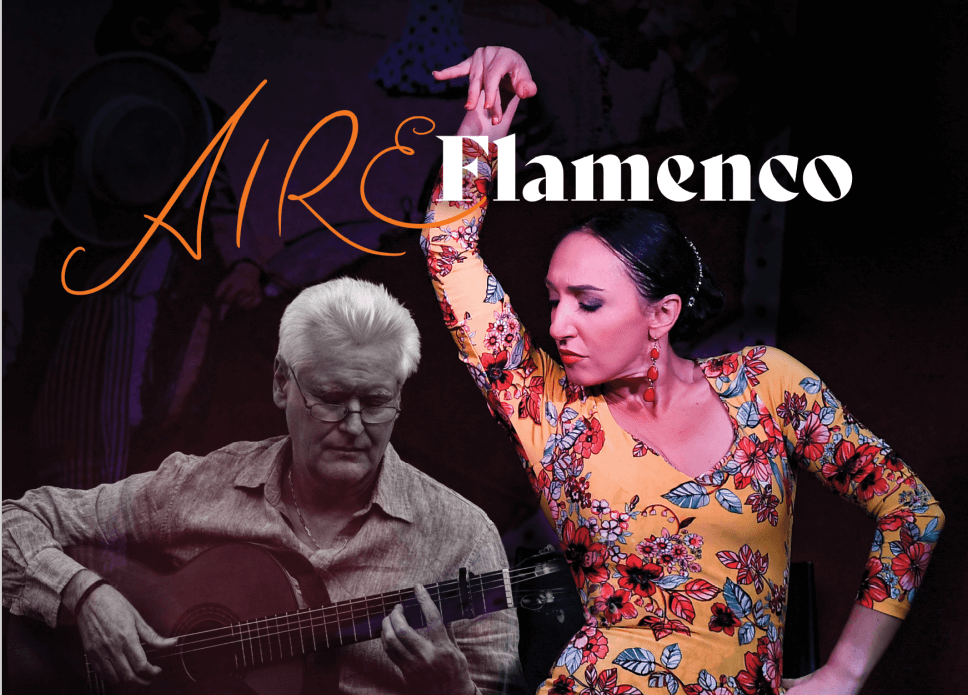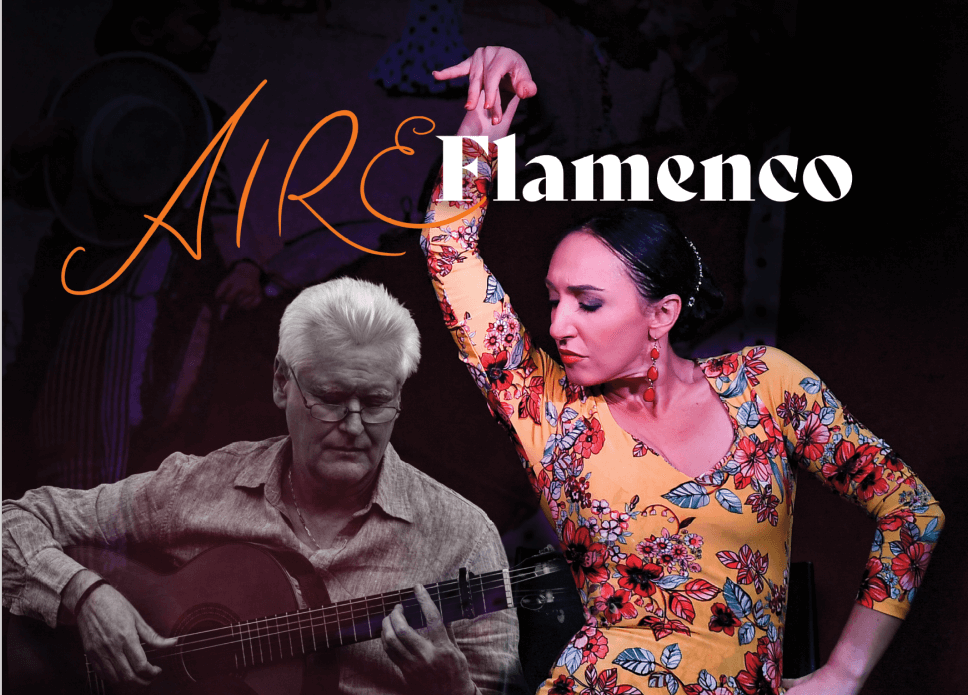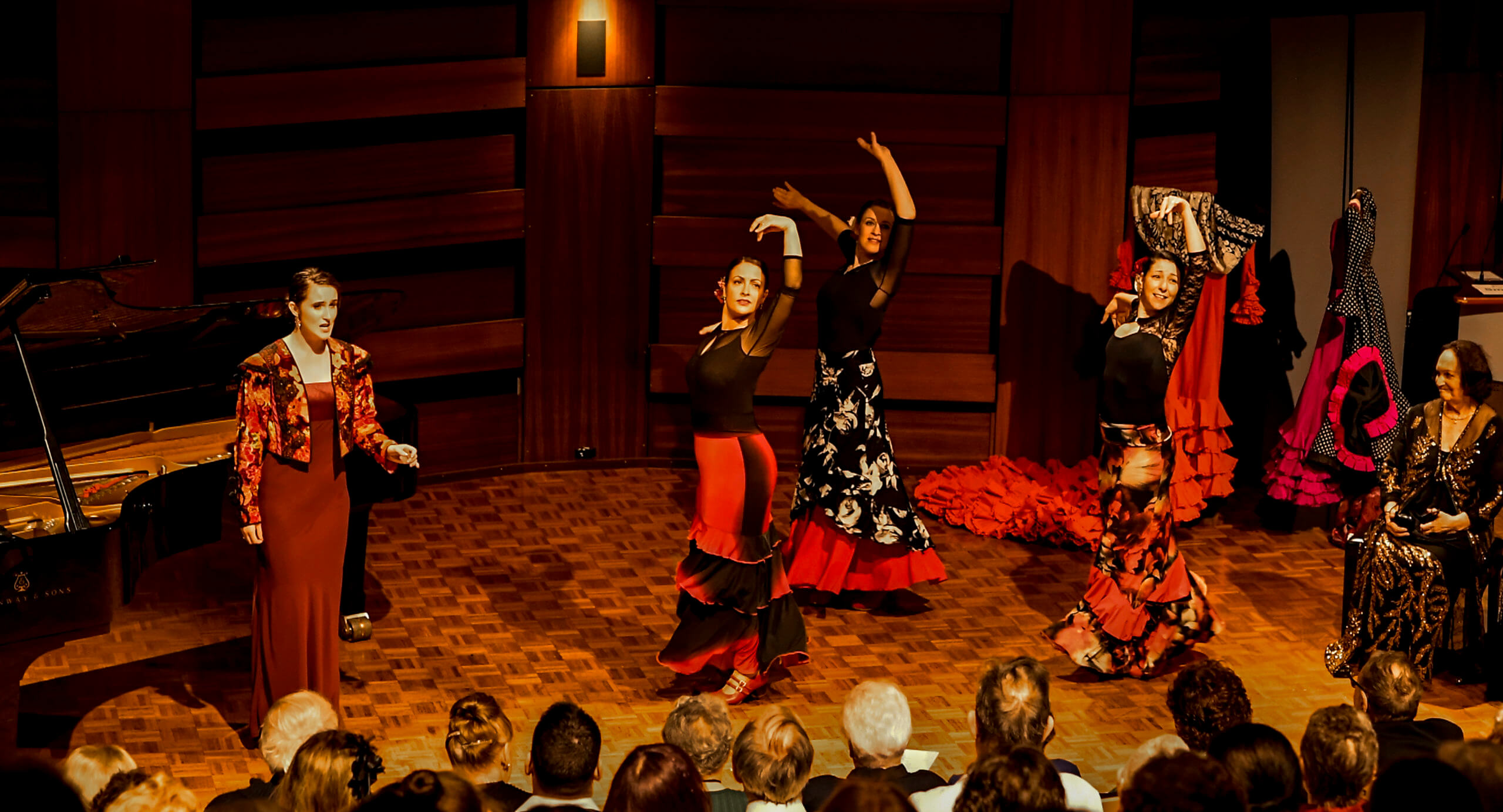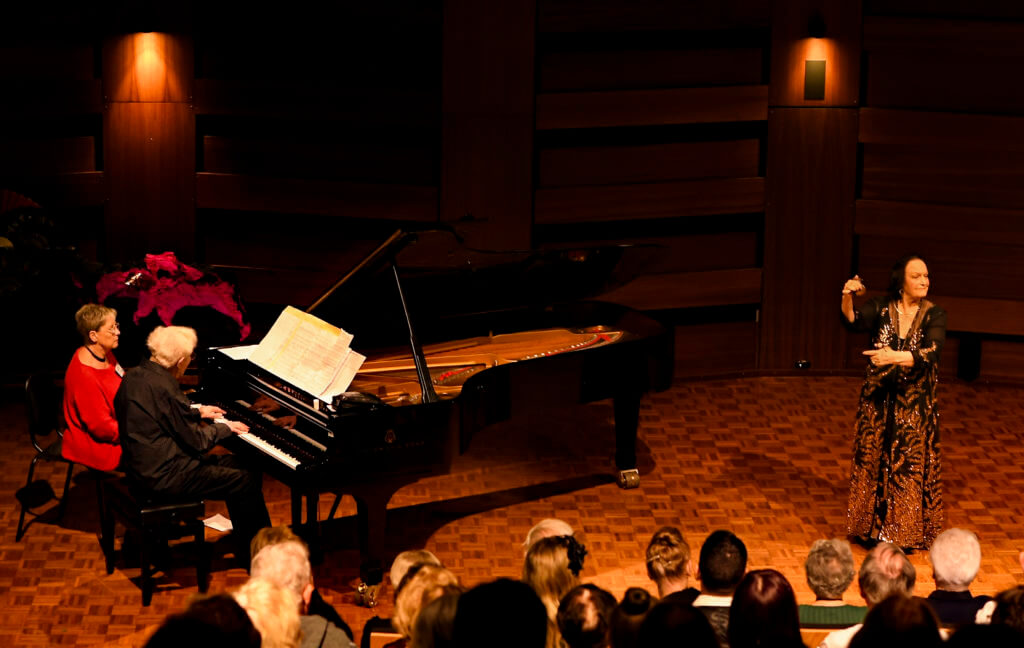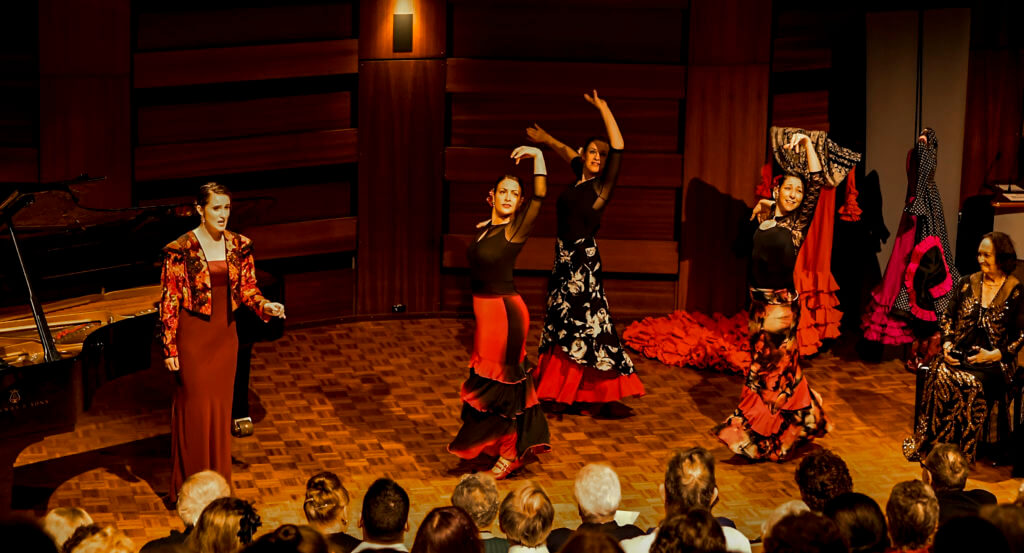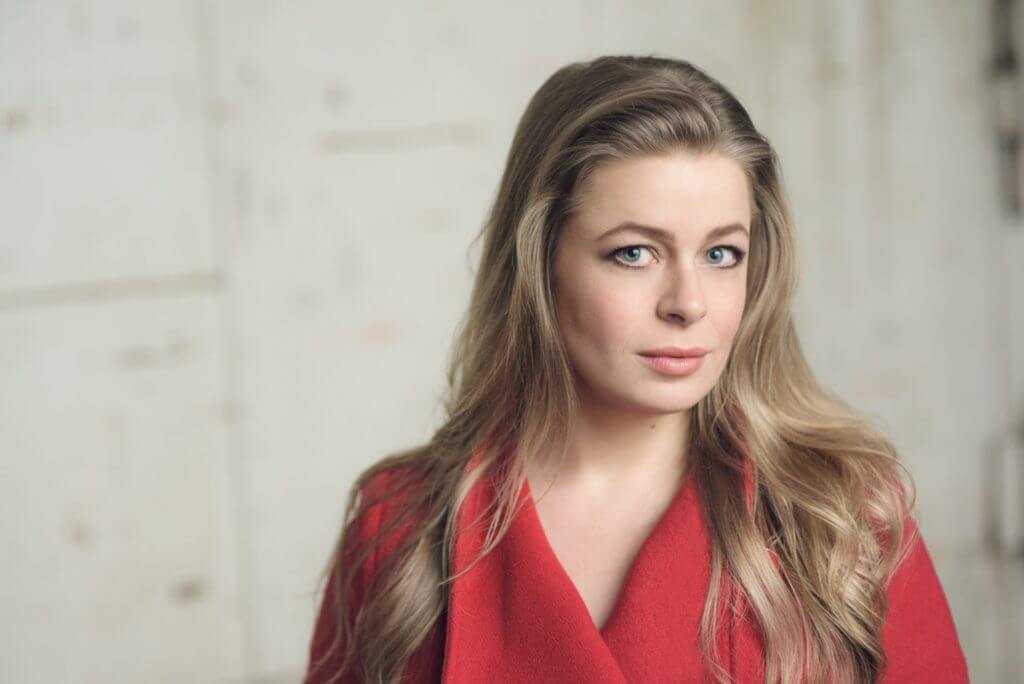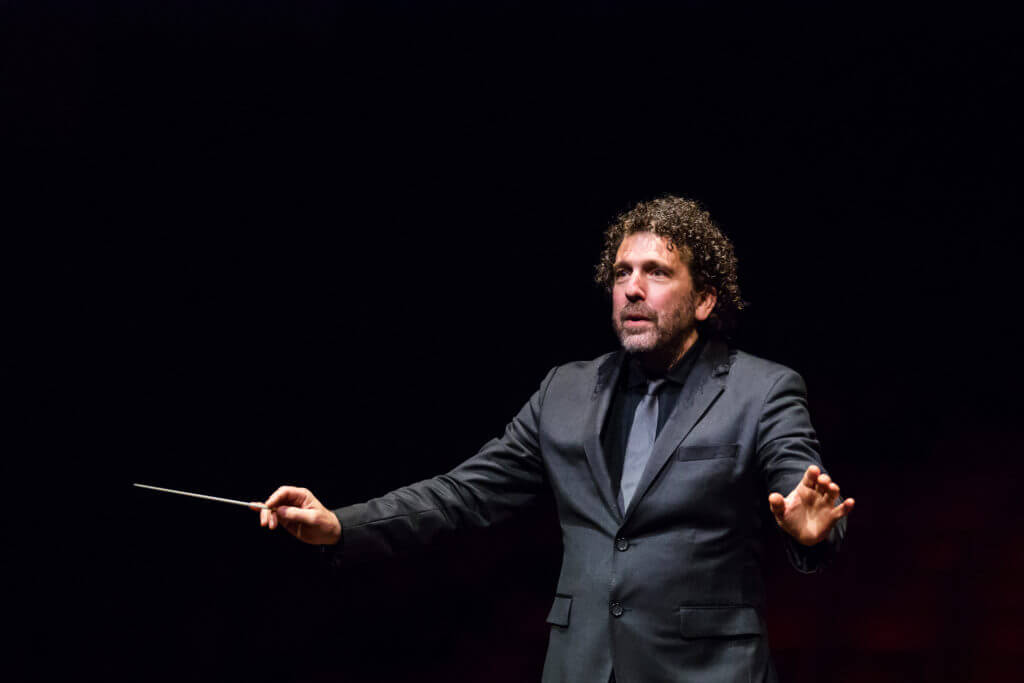DANCE
reviewed by Neville Cohn
Lyric’s Underground
Stars of the afternoon Maree Laffan and Valeria Gonzalez, beautifully gowned, triggered thoroughly deserved, sustained and enthusiastic applause for their solos. Maree’s Tangos and Valerie’s Fandango de Huelva were high points of the afternoon.
Initially, we watched a brief but fascinating history of flamenco via a series of often intriguing images projected onto an on-stage screen.
Twice, members of the audience were invited to the front of the venue to clap and dance along to a spirited, on-stage instrumental accompaniment.
There was much else on offer. Guitarist Jose Giraldo, that veteran of innumerable flamenco performances, rose splendidly to the occasion as did Steve Richter, a wizard of the cajon.
The programme was very carefully constructed to include the chief aspects of flamenco: the dance (el baile), the guitar (el toque) and the voice (el cante). A highlight was a guitar Soleares played by Giraldo and Francesca Lizza .
